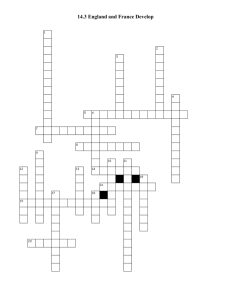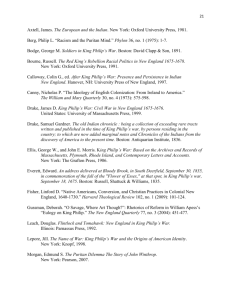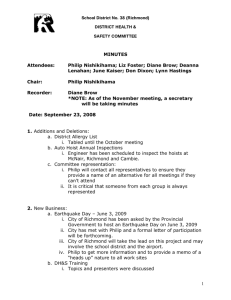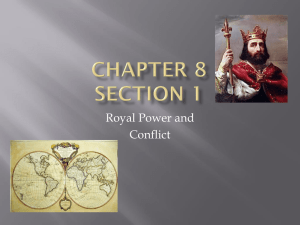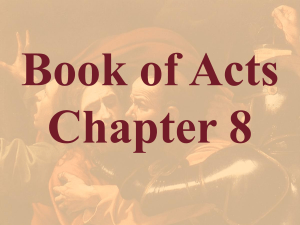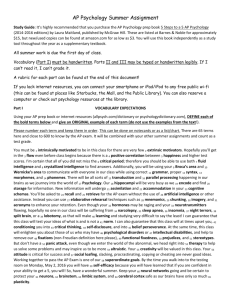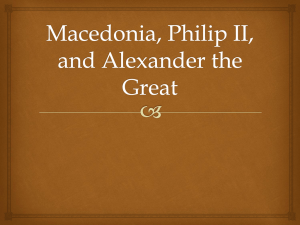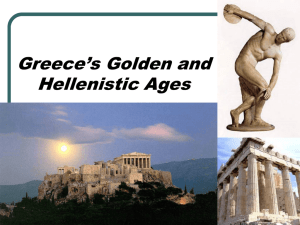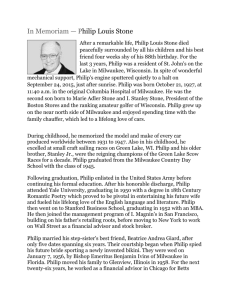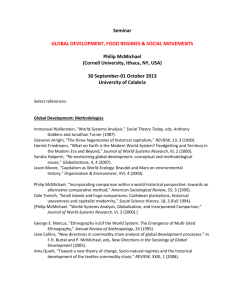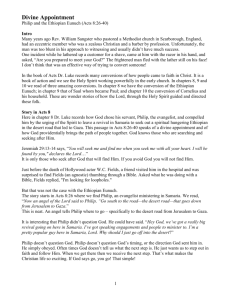PHILIP II - Classical Studies
advertisement
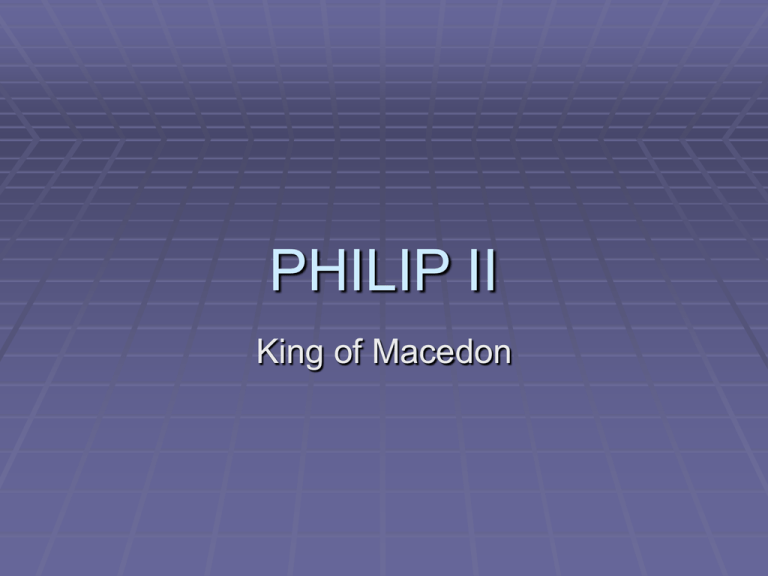
PHILIP II King of Macedon Philip II BACKGROUND TO PHILIP II In 370s Philip’s brother Alexander II tried to weaken the stronghold of Thebes in Thessaly. 369-367BC Philip was an exile in Thebes where he was able to witness Greek politics and military tactics BACKGROUND cont 367 Macedonia in a state of disarray Macedonia went through 3 rulers during the late and mid 360s 1) Ptolemy of Abrus 2) Pausunias 3) Perdiccas III 357 saw an infant ruler instilled on the Macedonian throne 360 Philip had power persuaded Athenians and Thracians to forget their claims to throne and accept Philip as the ruler. AIMS AND POLICIES Ultimate aim was to make Macedonia master of the Balkans Opposition was seen by Persia as Persia controlled much of the Balkans Main concern was Philip did not match the military strength of Persia. He would unite the Greek states and then convince them to fight against Persia. How did he convice the Greeks He used the excuse it was a religious war of revenge. As the Persians had come into Greece in the 400s and destroyed and desecrated their temples Steps taken by Philip to ensure his aims were fulfilled a) He fought his enemies in the North conquering the Iliyrians and Peonians b) He began the process of Hellenization – the transformation of Macedonia into a Greek state. c) He re-organised the army d) Avoided war with the Greeks and hoped they accepted Macedonian leadership. THE ARMY OF PHILIP II Philip II used the oblique approach that Epaminondas used in 371. Foot companions who had to pin down part of the enemy line Companions who were the main striking force, close to the King also. Cavalry struck in the flank or rear The hypaspists (guards) were created by Philip to protect the flank of the phalanx and keep in contact with the cavalry then added a light armed troop form conquered territories. The army was divided by tribes into battalions, large enough to operate independtly and together formed the phalanx, armed with sarissa’s (enornmous pikes 18 feet long), metal helmets, small shieds and swords. They had a steady advance rather than a rush. THE CORINTHIAN LEAGUE In 338/7 BC King Philip, proud of his victory at Chaeroneia by which he had humbled the leading Greek states, became ambitious to become leader of all Greece. He spread the word that he wished to to undertake a war against the Persians on behalf of Greece and to punish them for the sacrilege they had comitted against Greek temples. He treated them all kindly both in public and private matters and revelaed to the cities that he wanted to discuss with them matters of m utual benefit. Hence he convened a general congress at Corinth and put forward his proposals for the war. By raising great hopes, he won the support of the delegates and finally they chose him as commander-in-chief of the Greek forces. He began to make great preparations for the campaign against the Persians and, after fixing the number of troops each city should contribute to the allied forces, he retured to Macedonia.


